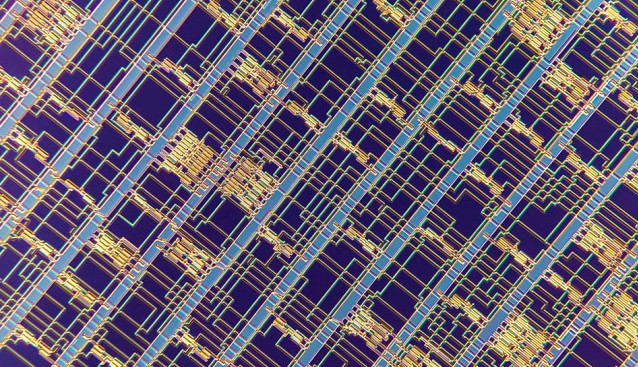A Microprocessor Made From Carbon Nanotube FETs
September 05, 2019
on
on

Researchers at MIT have developed a microprocessor based on carbon nanotube transistors. As described in the journal Nature, it can be fabricated using traditional silicon chip manufacturing techniques. This represents an important step towards a practical realisation of the next generation of microprocessors using carbon nanotubes.
The fabrication of carbon nanotube field effect transistors (CNFETs) is particularly important for the construction of next-generation computers. CNFETs have about ten times more energy efficiency and operate at far higher speeds than silicon FETs. Until now the large-scale production of CNFETs has been dogged by manufacturing defects.
MIT researchers were able to drastically limit defects and build CNFETs using established processes in a traditional silicon foundry. They constructed a fully functional 16-bit microprocessor made from more than 14,000 CNFETs. It is based on the RISC-V open source chip architecture, which defines commands that a compatible microprocessor can execute. For demonstration purposes, the Hello World program produced the sentence "Hello, World! I am the RV16XNano, made from CNTs. "
The microprocessor builds on an earlier version made up of 178 CNFETs developed by other researchers six years ago. For years, the defects inherent in carbon nanotubes have been considered a kind of blight that makes their practical use difficult. To function correctly CNFETs should have semiconducting properties but a small portion of the carbon nanotubes become metallic, which slows or totally blocks transistor switching. Given the transistor density of today’s integrated circuits the process needs to produce carbon nanotubes at around 99.999999 percent purity, which is virtually impossible to achieve using current production techniques.
The researchers have developed a technique called DREAM (acronym for Designing Resiliency Against Metallic cnts) which positions metallic CNFETs so that they do not interfere with data processing. Thus, they relaxed the purity requirement by about four orders of magnitude - a carbon nanotube purity of about 99.99 percent is now sufficient and this is possible using present day production methods.
Source: MIT news
The fabrication of carbon nanotube field effect transistors (CNFETs) is particularly important for the construction of next-generation computers. CNFETs have about ten times more energy efficiency and operate at far higher speeds than silicon FETs. Until now the large-scale production of CNFETs has been dogged by manufacturing defects.
MIT researchers were able to drastically limit defects and build CNFETs using established processes in a traditional silicon foundry. They constructed a fully functional 16-bit microprocessor made from more than 14,000 CNFETs. It is based on the RISC-V open source chip architecture, which defines commands that a compatible microprocessor can execute. For demonstration purposes, the Hello World program produced the sentence "Hello, World! I am the RV16XNano, made from CNTs. "
The microprocessor builds on an earlier version made up of 178 CNFETs developed by other researchers six years ago. For years, the defects inherent in carbon nanotubes have been considered a kind of blight that makes their practical use difficult. To function correctly CNFETs should have semiconducting properties but a small portion of the carbon nanotubes become metallic, which slows or totally blocks transistor switching. Given the transistor density of today’s integrated circuits the process needs to produce carbon nanotubes at around 99.999999 percent purity, which is virtually impossible to achieve using current production techniques.
The researchers have developed a technique called DREAM (acronym for Designing Resiliency Against Metallic cnts) which positions metallic CNFETs so that they do not interfere with data processing. Thus, they relaxed the purity requirement by about four orders of magnitude - a carbon nanotube purity of about 99.99 percent is now sufficient and this is possible using present day production methods.
Source: MIT news
Read full article
Hide full article


Discussion (0 comments)